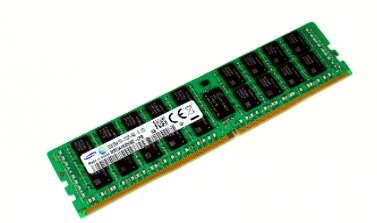Samsung Electronics Co., Ltd., the world leader in memory technology, announced that it is mass producing the industry’s most advanced 8-gigabit (Gb) DDR4 memory and 32-gigabyte (GB) module, both of which will be manufactured based on a new 20-nanometer (nm) process technology, for use in enterprise servers.

With its new 8Gb DDR4, Samsung now offers a full line-up of 20nm-based DRAM to lead a new era of 20nm DRAM efficiency that also includes the 20nm 4Gb DDR3 for PCs and the 20nm 6Gb LPDDR3 for mobile devices.
Using the new 8Gb DDR4 chip, Samsung began producing the 32GB registered dual in-line memory module (RDIMM) earlier this month. The new module’s data transfer rate per pin reaches up to 2,400 megabits per second (Mbps), which delivers an approximately 29 percent performance increase, compared to the 1,866 Mbps bandwidth of a DDR3 server module.
Beyond the 32GB modules, the new 8Gb chips will allow production of server modules with a maximum capacity of 128GB by applying 3D through silicon via (TSV) technology, which will encourage further expansion of the high-density DRAM market.
The new high density DDR4, also boasts improved error correction features, which will increase memory reliability in the design of enterprise servers. In addition, the new DDR4 chip and module use 1.2 volt, which is currently the lowest possible voltage.
Samsung

Leave a Reply